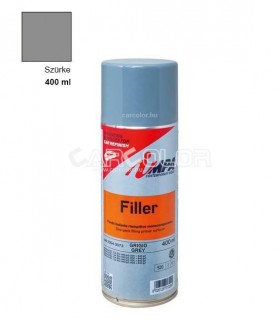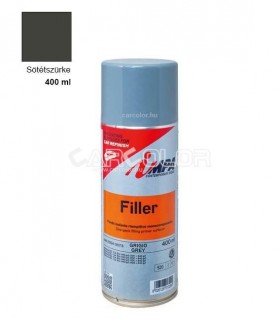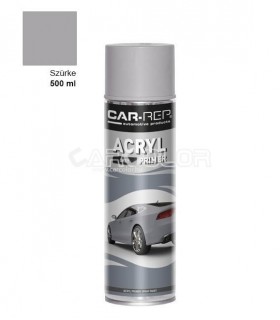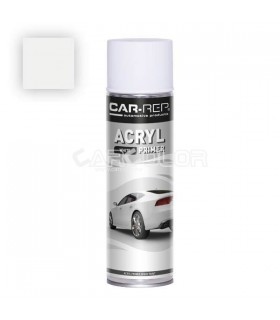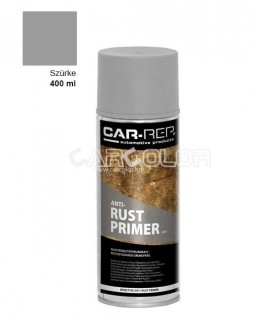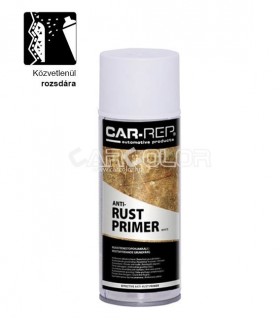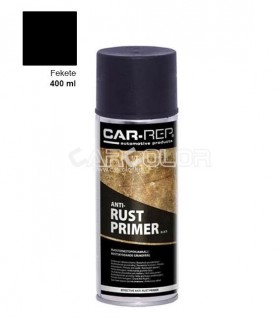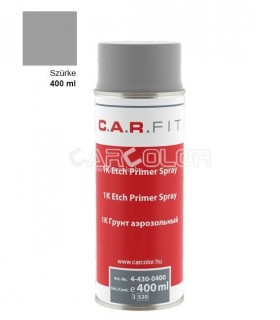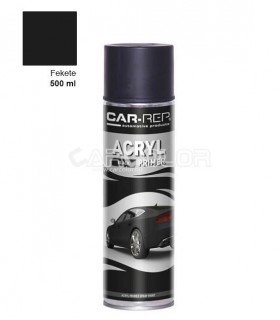Spray Primer
Spray Primer – Fast and Efficient Surface Preparation
Spray primers play a crucial role in painting projects as they prepare the surface for the final coating. These primers enhance adhesion, smooth out surface imperfections, and extend the lifespan of the topcoat. Whether for automotive refinishing, metal protection, or plastic surface treatment, selecting the right primer is essential.
Which spray primer should you choose?
Choosing the right primer depends on the application and the material being treated. Here are the most common types:
- Acrylic primer spray – A universal primer that offers quick drying and excellent adhesion.
- Plastic primer spray – Specifically designed for pre-treating plastic surfaces.
- Filler primer spray – A thicker primer layer used to fill minor imperfections and scratches.
- Rust-inhibiting primer spray – A special coating developed to protect metal surfaces from corrosion.
Each primer type has different properties, so always select the one that best suits the surface and intended application.
Why is primer important?
- Enhances adhesion – Helps the topcoat adhere properly to the surface.
- Levels out imperfections – Fills in minor scratches and surface irregularities.
- Extends the lifespan of the topcoat – Prevents paint from peeling or wearing off prematurely.
- Provides protection – May include anti-corrosion and weather-resistant properties.
Primer Types and Applications
| Primer Type | Application |
|---|---|
| Acrylic primer | General surfaces, wood, plastic, metal |
| Plastic primer | PP, ABS, and other plastics pre-treatment |
| Filler primer | Hiding scratches and small imperfections |
| Rust-inhibiting primer | Corrosion protection for metal surfaces |
How to Properly Apply Spray Primer?
Proper primer application is essential for successful painting. Follow these steps to ensure a durable and even coating:
1️⃣. Surface preparation: Clean the surface thoroughly to remove dust, grease, and contaminants. Use a silicone remover for maximum adhesion.
2️⃣. Sanding: If necessary, smooth the surface with fine sandpaper (e.g., P400-P600).
3️⃣. Priming: Shake the primer can thoroughly, then apply in thin, even layers from a distance of about 20-30 cm.
4️⃣. Drying: Allow the primer to dry according to the manufacturer’s instructions (typically 10-30 minutes per layer).
5️⃣. Sanding and additional layers: If needed, lightly sand the primer (e.g., P800-P1000), then reapply as necessary.
Tips for the Best Results
- Always apply primer at an appropriate temperature (15-25°C) in a dust-free environment.
- Avoid applying thick layers all at once, as they may drip.
- Use masking tape to protect areas that should not be painted.
- Apply in smooth, even motions to prevent uneven coverage.
Choosing the right spray primer and applying it correctly significantly improves the success of painting projects. Whether for automotive refinishing, metal, or plastic surface treatment, priming is a vital step for achieving a long-lasting and aesthetically pleasing finish.
Need assistance? Contact us today!
CarColor has been an expert in coatings since 1991! ✔️ ✈️ Shipping: 1-2 days ☎️ +36 30 573 8511 ➤ ⚡
Frequently Asked Questions About Spray Primers (FAQ)
Why should I use a spray primer?
Spray primers offer quick and even application, making the job easier, especially in hard-to-reach areas. They also reduce the time spent cleaning tools, as there is no need for brushes or rollers.
What surfaces can spray primer be applied to?
Spray primers can be used on a variety of surfaces, including metal, wood, plastic, and glass. However, always check the product label to ensure compatibility with the desired surface.
Is it necessary to use a primer before painting?
Yes, using a primer improves paint adhesion and durability, while also providing a smoother surface. It is especially recommended for porous or problematic surfaces.
How long does spray primer take to dry?
Drying times vary by product, but generally range from 15 to 30 minutes. Always follow the manufacturer’s instructions for accurate drying times.
How should the surface be prepared before applying spray primer?
The surface should be thoroughly cleaned of dust, grease, and other contaminants. If necessary, sand the surface for better adhesion.
Can spray primer be applied to rusty surfaces?
Yes, there are specialized rust-inhibiting spray primers that can be applied directly to rusted surfaces, helping to prevent further corrosion.
From what distance should the spray primer be applied?
It is generally recommended to spray the primer from a distance of 15-25 cm to achieve even coverage.
At what temperature should spray primer be applied?
The ideal application temperature is between 20-25°C. Avoid excessively cold or hot environments for the best results.
How should spray primer be stored after use?
After use, turn the can upside down and spray a small amount to clear the nozzle. Store in a cool, dry place, away from direct sunlight.
What protective equipment should be used when applying spray primer?
Always wear appropriate protective gear, such as a respirator, safety goggles, and gloves for safe application.






